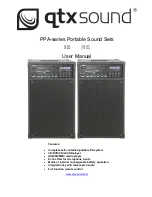
Chapter 1: Equalizer Overview
26
Equalizer Installation and Administration Guide
Geographic Load Balancing Routing
Envoy routes each incoming request to the site best able to handle it. If a site is unavailable or overloaded, Envoy
routes requests to the other sites in the geographic cluster. When you enable geographic load balancing, Envoy
directs incoming client requests to one of the sites in the geographic cluster based on the following criteria:
•
Availability: I
f a site is unavailable due to network outage, server failure, or any other reason, Equalizer
stops directing requests to that site.
•
Performance:
Envoy tracks the load and performance at each site and uses this information to determine
the site that can process the request most efficiently.
•
Distance:
Envoy notes the site that is
closest
to the client (in network terms) and offers the least network
latency.
Distributing the Geographic Load
Envoy uses the Domain Name System (DNS) protocol
1
to perform its geographic load distribution. DNS translates
fully-qualified domain names such as
www.coyotepoint.com
into the IP addresses that identify hosts on the
Internet. For Envoy, the authoritative name server for the domain is configured to query the Equalizers in the
geographic cluster to resolve the domain name. When Envoy receives a resolution request, it uses the load-balancing
algorithms configured for the geographic cluster to determine the site that is best able to process the request and then
returns the address of the selected site.
For example, the geographic cluster
www.coyotepoint.com
might have three sites (see Figure 2): one on the east
coast of the U.S., one on the west coast of the U.S., and one in Europe. The servers at each site are connected to an
Equalizer with the Envoy add-on installed.
Figure 2
Three-site geographic cluster configuration
When a client in California attempts to connect to
coyotepoint.com
:
1. For more information about DNS, see Paul Albitz and Cricket Liu, DNS and BIND, 3rd ed. (O'Reilly & Associates, 1998).
Envoy Site B
(West Coast USA)
Envoy Site A
(East Coast USA)
Internet
Envoy Site C
(Europe)
Содержание E350GX
Страница 18: ...Chapter Preface 18 Equalizer Installation and Administration Guide ...
Страница 38: ...Chapter 1 Equalizer Overview 38 Equalizer Installation and Administration Guide ...
Страница 50: ...Chapter 2 Installing and Configuring Equalizer Hardware 50 Equalizer Installation and Administration Guide ...
Страница 62: ...Chapter 3 Using the Administration Interface 62 Equalizer Installation and Administration Guide ...
Страница 80: ...Chapter 4 Equalizer Network Configuration 80 Equalizer Installation and Administration Guide ...
Страница 110: ...Chapter 5 Configuring Equalizer Operation 110 Equalizer Installation and Administration Guide ...
Страница 208: ...Chapter 7 Monitoring Equalizer Operation 208 Equalizer Installation and Administration Guide ...
Страница 240: ...Chapter 8 Using Match Rules 238 Equalizer Installation and Administration Guide ...
Страница 258: ...Chapter 9 Administering GeoClusters 254 Equalizer Installation and Administration Guide Envoy Configuration Worksheet ...
Страница 262: ...Appendix A Server Agent Probes 258 Equalizer Installation and Administration Guide ...
Страница 274: ...Appendix B Timeout Configuration 270 Equalizer Installation and Administration Guide ...
Страница 280: ...Appendix D Regular Expression Format 276 Equalizer Installation and Administration Guide ...
Страница 296: ...Appendix E Using Certificates in HTTPS Clusters 292 Equalizer Installation and Administration Guide ...
Страница 310: ...Appendix F Equalizer VLB 306 Equalizer Installation and Administration Guide ...
Страница 318: ...Appendix G Troubleshooting 314 Equalizer Installation and Administration Guide ...
















































